- Clone
- 2E1.E9 (See other available formats)
- Regulatory Status
- RUO
- Other Names
- Glial fibrillary acid protein
- Isotype
- Mouse IgG2b
- Ave. Rating
- Submit a Review
- Product Citations
- publications
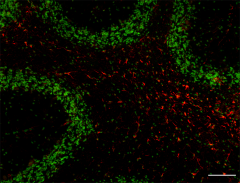
-

C57BL/6 mouse frozen cerebellum section was fixed with 4% paraformaldehyde (PFA) for 10 minutes at room temperature and blocked with 5% FBS for 1 hour at room temperature. Then the section was stained with 2.5 µg/mL of GFAP (clone 2E1.E9) Alexa Fluor® 594 (red) overnight at 4°C. Nuclei were counterstained with DAPI (green). The image was captured by 10X objective. Scale Bar: 50 µm -

IHC staining of Alexa Fluor® 594 anti-GFAP (clone 2E1.E9) on formalin-fixed paraffin-embedded human brain tissue. Following antigen retrieval using Citrate, 10X (Cat. No. 420902), the tissue was incubated with 5 µg/mL of Alexa Fluor® 594 anti-GFAP (clone 2E1.E9). Nuclei were counterstained with DAPI (Cat. No. 422801). Images were captured with a 10X (panel A) or 40X (panel B) objective. Scale bar: 50 µm
GFAP is expressed exclusively in astrocytes in the central nervous system. The protein is a member of the intermediate filament family of proteins which form networks providing support and strength to cells. This antibody does not cross-react with other intermediate filaments such as vimentin, neurofilament proteins, desmin and others. More than 50 GFAP mutations have been identified to be associated with the Alexander disease.
Product DetailsProduct Details
- Verified Reactivity
- Human, Mouse, Rat
- Antibody Type
- Monoclonal
- Host Species
- Mouse
- Immunogen
- Bovine spinal cord homogenate
- Formulation
- Phosphate-buffered solution, pH 7.2, containing 0.09% sodium azide.
- Preparation
- The antibody was purified by affinity chromatography and conjugated with Alexa Fluor® 594 under optimal conditions.
- Concentration
- 0.5 mg/mL
- Storage & Handling
- The antibody solution should be stored undiluted between 2°C and 8°C, and protected from prolonged exposure to light. Do not freeze.
- Application
-
IHC-F - Quality tested
IHC-P - Verified
SB - Community verified - Recommended Usage
-
Each lot of this antibody is quality control tested by immunohistochemical staining on frozen tissue sections. For immunohistochemistry, a concentration range of 1.0 - 5.0 µg/mL is suggested. For immunohistochemistry on formalin-fixed paraffin-embedded tissue sections, a concentration range of 1.0 - 10 µg/mL is suggested. It is recommended that the reagent be titrated for optimal performance for each application.
* Alexa Fluor® 594 has an excitation maximum of 590 nm, and a maximum emission of 617 nm.
Alexa Fluor® and Pacific Blue™ are trademarks of Life Technologies Corporation.
View full statement regarding label licenses - Additional Product Notes
-
This product has been verified for IHC-F (Immunohistochemistry - frozen tissue sections) on the NanoString GeoMx® Digital Spatial Profiler. The GeoMx® enables researchers to perform spatial analysis of protein and RNA targets in FFPE and fresh frozen human and mouse samples. For more information about our spatial biology products and the GeoMx® platform, please visit our spatial biology page.
-
Application References
(PubMed link indicates BioLegend citation) -
- McLendon RE and Bigner DD. 1994. Brain Pathol. 4:221.
- Liu W, et al. 2011. Proteomics 11:3556. (FC) PubMed
- Product Citations
-
- RRID
-
AB_2566205 (BioLegend Cat. No. 644708)
Antigen Details
- Structure
- Around 50 kD
- Distribution
-
Only expressed in astrocytes in the central nervous system.
- Function
- Together with other proteins to form intermediate filaments which supports astroglial cells. Astroglial cells support and nourish cells in the brain and spinal cord. If brain cells are injured through trauma or disease, astroglial cells react by rapidly prodcing more GFAP protein.
- Cell Type
- Astrocytes
- Biology Area
- Cell Biology, Neuroscience, Neuroscience Cell Markers
- Molecular Family
- Intermediate Filaments
- Gene ID
- 2670 View all products for this Gene ID
- Specificity (DOES NOT SHOW ON TDS):
- GFAP
- Specificity Alt (DOES NOT SHOW ON TDS):
- GFAP
- App Abbreviation (DOES NOT SHOW ON TDS):
- IHC-F,IHC-P,SB
- UniProt
- View information about GFAP on UniProt.org
Related FAQs
- If an antibody clone has been previously successfully used in IBEX in one fluorescent format, will other antibody formats work as well?
-
It’s likely that other fluorophore conjugates to the same antibody clone will also be compatible with IBEX using the same sample fixation procedure. Ultimately a directly conjugated antibody’s utility in fluorescent imaging and IBEX may be specific to the sample and microscope being used in the experiment. Some antibody clone conjugates may perform better than others due to performance differences in non-specific binding, fluorophore brightness, and other biochemical properties unique to that conjugate.
- Will antibodies my lab is already using for fluorescent or chromogenic IHC work in IBEX?
-
Fundamentally, IBEX as a technique that works much in the same way as single antibody panels or single marker IF/IHC. If you’re already successfully using an antibody clone on a sample of interest, it is likely that clone will have utility in IBEX. It is expected some optimization and testing of different antibody fluorophore conjugates will be required to find a suitable format; however, legacy microscopy techniques like chromogenic IHC on fixed or frozen tissue is an excellent place to start looking for useful antibodies.
- Are other fluorophores compatible with IBEX?
-
Over 18 fluorescent formats have been screened for use in IBEX, however, it is likely that other fluorophores are able to be rapidly bleached in IBEX. If a fluorophore format is already suitable for your imaging platform it can be tested for compatibility in IBEX.
- The same antibody works in one tissue type but not another. What is happening?
-
Differences in tissue properties may impact both the ability of an antibody to bind its target specifically and impact the ability of a specific fluorophore conjugate to overcome the background fluorescent signal in a given tissue. Secondary stains, as well as testing multiple fluorescent conjugates of the same clone, may help to troubleshoot challenging targets or tissues. Using a reference control tissue may also give confidence in the specificity of your staining.
- How can I be sure the staining I’m seeing in my tissue is real?
-
In general, best practices for validating an antibody in traditional chromogenic or fluorescent IHC are applicable to IBEX. Please reference the Nature Methods review on antibody based multiplexed imaging for resources on validating antibodies for IBEX.
Other Formats
View All GFAP Reagents Request Custom Conjugation| Description | Clone | Applications |
|---|---|---|
| Purified anti-GFAP | 2E1.E9 | WB,ICC,IHC-F,IHC-P,FC |
| Alexa Fluor® 488 anti-GFAP | 2E1.E9 | IHC-F,ICC,IHC-P,SB |
| Alexa Fluor® 647 anti-GFAP | 2E1.E9 | IHC-F,IHC-P,SB |
| Alexa Fluor® 594 anti-GFAP | 2E1.E9 | IHC-F,IHC-P,SB |
| Brilliant Violet 421™ anti-GFAP | 2E1.E9 | IHC-F,ICC,IHC-P |
Customers Also Purchased
Compare Data Across All Formats
This data display is provided for general comparisons between formats.
Your actual data may vary due to variations in samples, target cells, instruments and their settings, staining conditions, and other factors.
If you need assistance with selecting the best format contact our expert technical support team.
-
Purified anti-GFAP

Total cell lysate from HeLa (negative control), U87-MG and t... 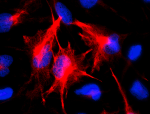
U251 cells were fixed with 4% paraformaldehyde (PFA) for ten... 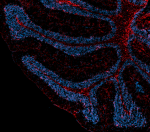
C57BL/6 mouse frozen brain section was fixed with 4% parafor... 
IHC staining of Purified anti-GFAP (clone 2E1.E9) on formali... 
IHC staining of purified anti-GFAP (clone 2E1.E9) on formali... -
Alexa Fluor® 488 anti-GFAP
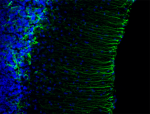
C57BL/6 mouse frozen brain section was fixed with 4% parafor... 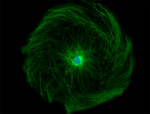
Day-three cultured postnatal C57BL/6 mouse brain cells were ... 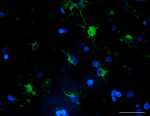
IHC staining of Alexa Fluor® 488 anti-GFAP (clone 2E1.E9) on... -
Alexa Fluor® 647 anti-GFAP
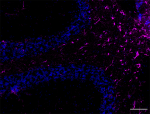
C57BL/6 mouse frozen cerebellum section was fixed with 4% pa... 
Human paraffin-embedded cerebellum tissue slices were prepar... 
Human paraffin-embedded cerebellum tissue slices were prepar... -
Alexa Fluor® 594 anti-GFAP

C57BL/6 mouse frozen cerebellum section was fixed with 4% pa... 
IHC staining of Alexa Fluor® 594 anti-GFAP (clone 2E1.E9) on... -
Brilliant Violet 421™ anti-GFAP
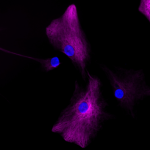
Day-three cultured postnatal C57BL/6 mouse brain cells were ... 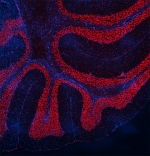
C57BL/6 mouse frozen brain tissue was fixed with 4% paraform... 
Human paraffin-embedded human cerebellum tissue slices were ...










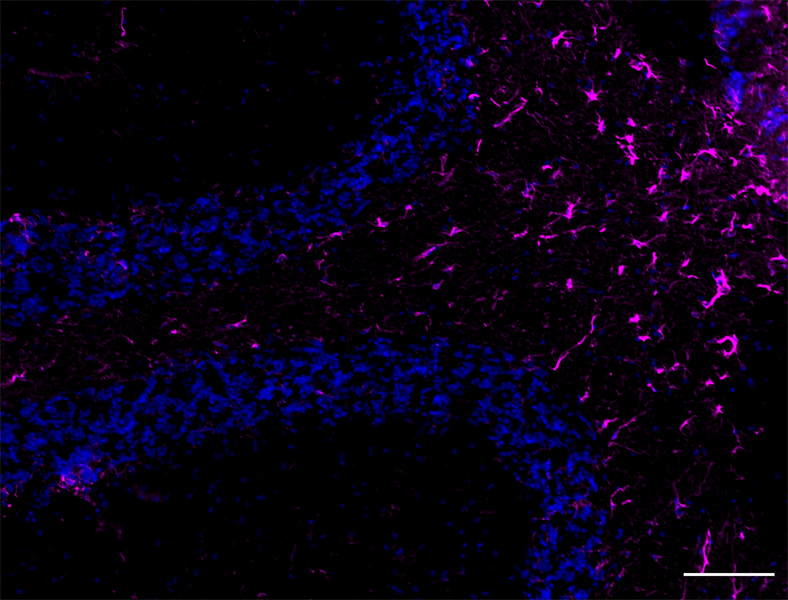
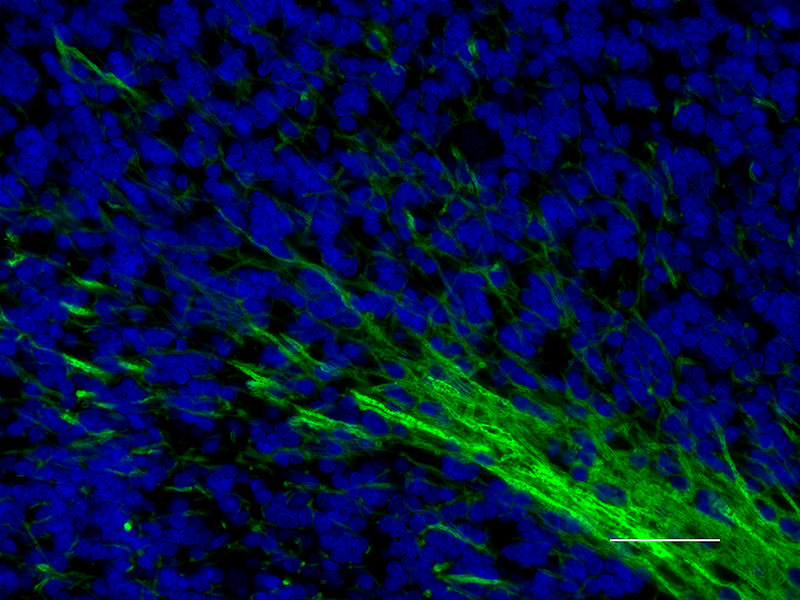

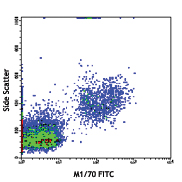



Follow Us